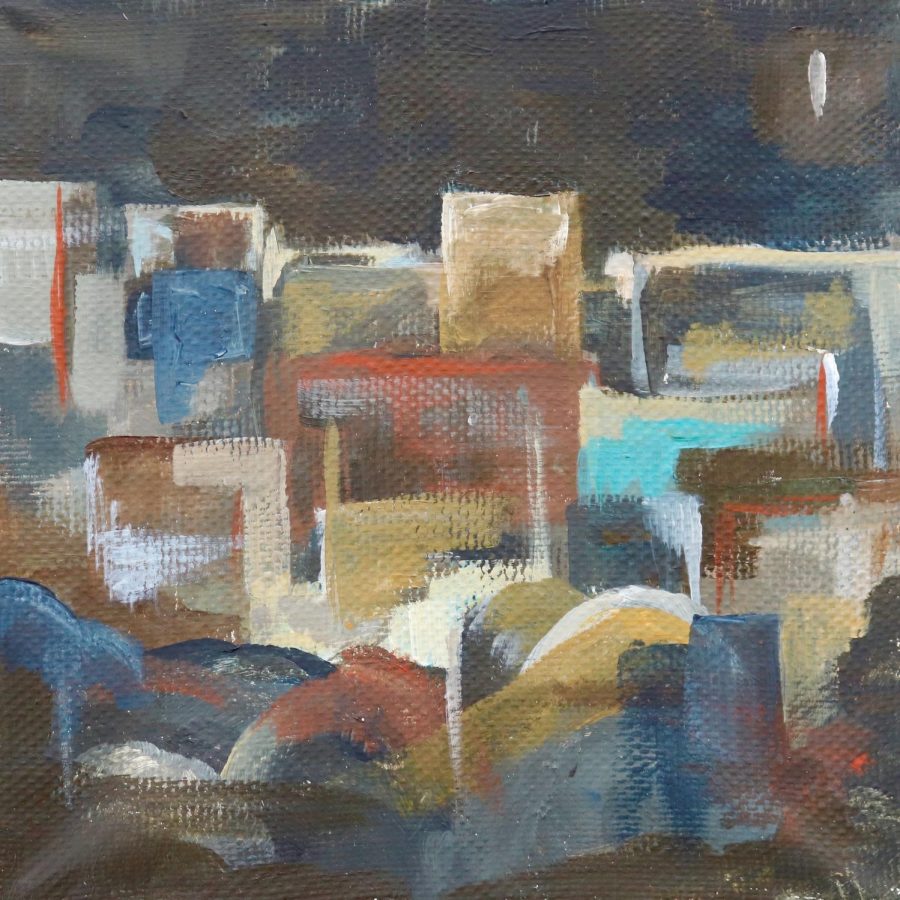Art Therapy: Painting the Isolation Away
Cross-stitching, writing screenplays and creating abstract paintings like the one above, all forms of art therapy, are how Polina Uzornikova is keeping her mind at ease.
April 1, 2020
I’ve always been into painting, cross-stitching and writing, but only recently have I started to consider the therapeutic nature of my recreational and professional pastimes. On day one of quarantine, I spent five hours completing my most recent cross-stitching pattern, and on day two I moved on to abstract painting. Day three, I completed the screenplay I’ve been meaning to finish for the past five months.
That got me wondering: Did I simply have more time to complete my outstanding projects, or was the process of completing them a way for me to calm my anxieties?
The phenomenon I was experiencing has a name: art therapy. According to Psychology Today, art therapy can help release emotion, deal with stress and manage anxiety and depression. In other words, it can provide help that our mental health desperately needs in the times of self-isolation and social distancing.
Olive Zoda, Fordham College at Lincoln Center (FCLC) ’23, got into art therapy in her first semester at Fordham. “Since coming to college, I have been trying to make peace with and move on from a few events in my life that have caused me a lot of pain,” she explained. “My roommate suggested I try writing and while I initially was unsure, I ended up writing a few poems I was actually a bit proud of. It felt really good to be able to talk about those events in my life in a way that was creative and fulfilling.”
Zoda started doing art therapy last semester. Vicky Carmenate, FCLC ’23 and a staff writer for The Observer, is practicing it now. “Playing my bass has given me peace during all of this,” she said. “I find myself needing to play. Especially since I’m in an environment where I typically regress into an unstable mental health state, music helps me take my mind off of everything going on around me.”
Have you never touched a paintbrush in your life? Was your last piano lesson in second grade? Do you consider yourself not to be enough of a reader to be able to write? I’ll let you in on a little secret: No prior artistic talent is necessary for art therapy to succeed. Art therapy is not about the artistic value of the work. It’s about letting your emotions out and figuring out what caused them. No one is going to force you to share your work with the world — art therapy is there to make you feel better.
It’s still relatively simple to get supplies, even in the time when going outside is ill-advised. For the most basic forms of art therapy you don’t even need them. I’m sure you can scavenge a pen or a pencil at home, or use your laptop. You can even use your face as a canvas and makeup as paints. If you have a more complex project in mind, Amazon and Etsy are your best friends. Just make sure your delivery is contactless, and don’t overspend the first time you embark on your new hobby. Depop is good for selling old clothes, not unused 20×20 canvases.
Now, I’m off to finish my most recent Lego project. And remember, if you’re feeling anxious, lonely, or just sad go express yourself — mindfully. You don’t want to get evicted for going Basquiat on your rental’s doors.














